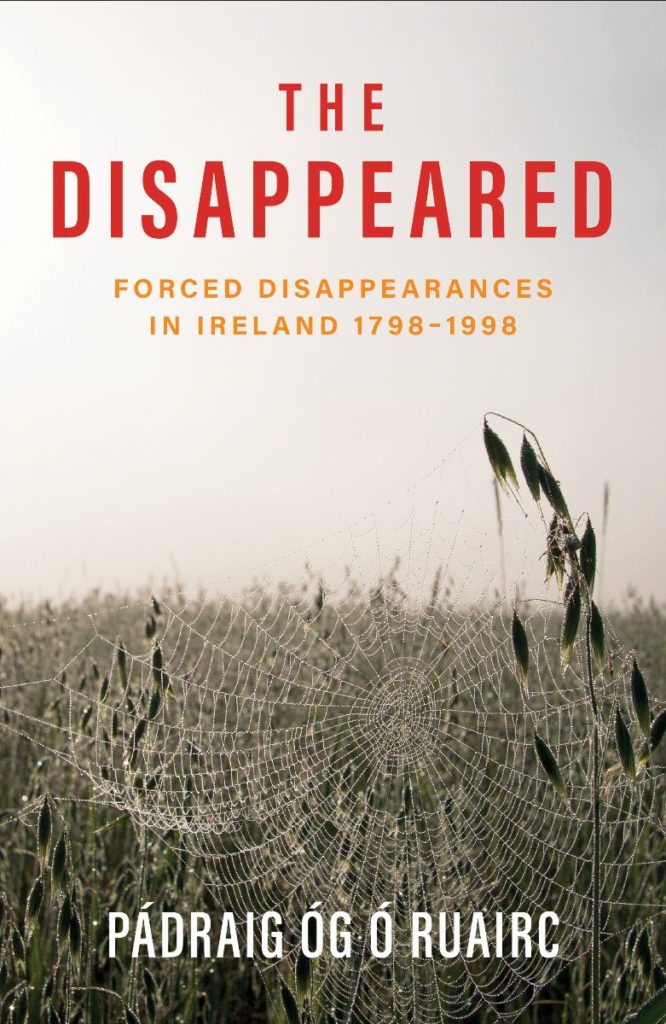A WRITER whose research into the ‘disappeared’ led to the discovery of one of the bodies has revealed that the practice has been in use in Ireland for some 200 years.
Pádraig Óg Ó Ruairc has spent the past decade researching the fate of the ‘disappeared’, those who were abducted by the IRA, secretly executed and had their bodies buried in remote bogs, lakes and woodlands never to be found again.
In 2018 Ó Ruairc’s research led to the recovery of the remains of one those victims, the British soldier Private George Chalmers, who had been executed by the IRA in 1921 and secretly buried in a remote bog.
The Clare-born historian, who has a BA in Archaeology from University College Dublin and a PhD in History from the University of Limerick, continues to research the brutal phenomenon.
Next month he releases his seventh book, which documents his most recent findings on the topic and reveals the location of several other bodies that remain to be exhumed.
In The Disappeared: Forced Disappearances in Ireland 1798-1998 Ó Ruairc claims ‘forced disappearances’ have been in use within Ireland’s political conflict for more than 200 years.
“The phenomenon of what international human rights law terms ‘forced disappearances’ has been documented worldwide for decades,” the author states.
“The practice involves executing enemy combatants, political opponents or civilians, and hiding their bodies for a political or military purposes,” he explains.
“Usually this is done by secretly burying the victims in remote or inaccessible locations,” he adds.
“Alternatively, the bodies may be destroyed by fire or occasionally by submerging them in lakes, rivers or at sea.”
 Pádraig Óg Ó Ruairc's latest book will be released next month
Pádraig Óg Ó Ruairc's latest book will be released next monthOne of the most famous ‘disappeared’ cases in Ireland is that of Jean McConville.
The Belfast-based mother-of-ten was kidnapped and murdered by the IRA in 1972, after being accused of passing information to British forces.
Her body was secretly buried in Co. Louth, where it was located in 2003, following which the IRA apologised to her family for hiding her remains and the grief it caused them.
Prior to this, the Independent Commission for the Location of Victims’ Remains (ICLVR) was established in 1999, following the signing of the Good Friday (Belfast) Agreement in 1998.
Aimed at locating 17 people who ‘disappeared’ at the height of the Troubles, its work continues today, as the remains of Joseph Lynskey, Columba McVeigh, Robert Nairac and Seamus Maguire have yet to be found.
But there remain many more people who were ‘disappeared’ during the political conflict that has blighted Ireland for more than two centuries, according to Ó Ruairc.
“Today the legacy of those disappeared in Northern Ireland still forms part of the Sinn Fein party, who were the political wing of the Provisional IRA,” the author explains in the introduction to his book.
 Historian and author Pádraig Óg Ó Ruairc
Historian and author Pádraig Óg Ó Ruairc“Less well known, however, is that the Provisional IRA’s frontrunners – the IRA of the 1920s, whose members are held up by Fianna Fail and Fine Gael, the traditional ruling parties in southern Ireland, as the founding fathers of the modern Irish state – also disappeared people they executed,” he added.
“Indeed, the first body found after the signing of the Belfast [Good Friday] Agreement was not someone from the Troubles but that of Patrick Joyce,” he explains.
“In 1998 Joyce’s remains were recovered from a bog in the Galway Gaeltacht by An Garda Siochana, where his body had been hidden since he was shot for being an informer buy the so-called ‘good-old IRA' in 1920.”
Through his research, Ó Ruairc has found that there were many more people ‘disappeared’ in Ireland’s relatively short-lived War of Independence than in the more recent Troubles period.
“Far more people were disappeared during the three years of the Irish War of Independence than during the thirty-year-long conflict in Northern Ireland,” he says.
“Still less well known is that the phenomenon of forced disappearance in Ireland did not begin in the 1920s,” he adds.
“Previous generations of Irish republican radicals beginning with the United Irishmen in the 1790s employed the same methods when executive alleged spies, informers or captured British soldiers, that were later adopted by the IRA in the 1920s and the Provisional IRA in the 1970s,” he explains.
In his book, which is released on February 15, Ó Ruairc offers a “brief overview of the origins of this practice in Irish political conflict and the first record of all those who are known, at the time of writing, to have been disappeared as a result of political conflict in twentieth-century Ireland”.
The Disappeared: Forced Disappearances in Ireland 1798-1998, by Pádraig Óg Ó Ruairc, published by Merrion Press, is available to preorder here.

